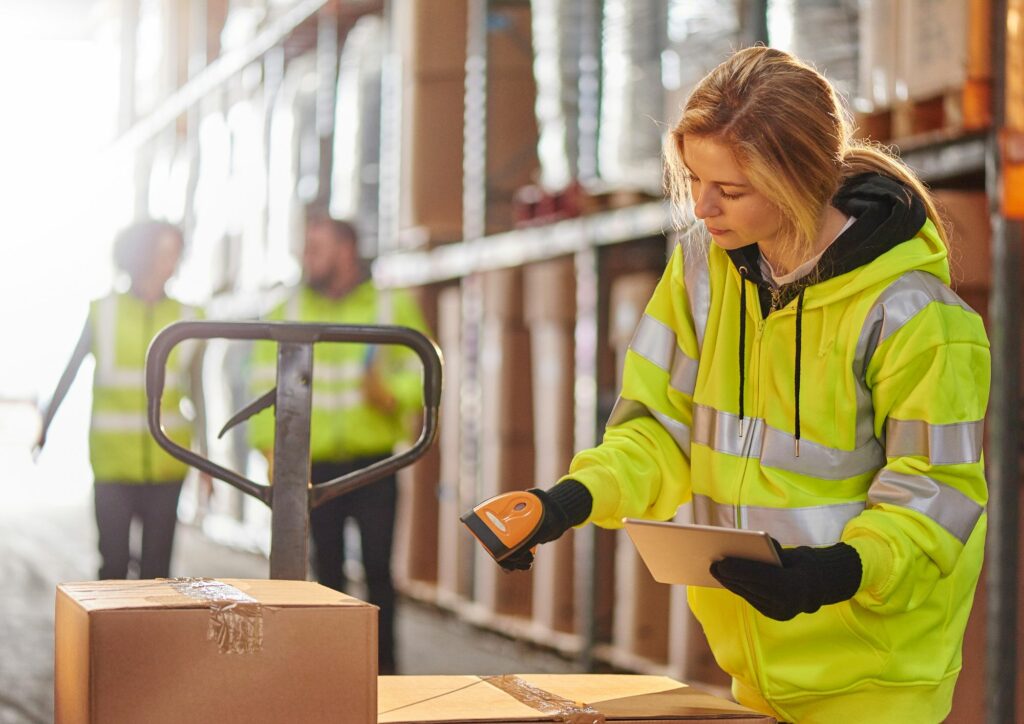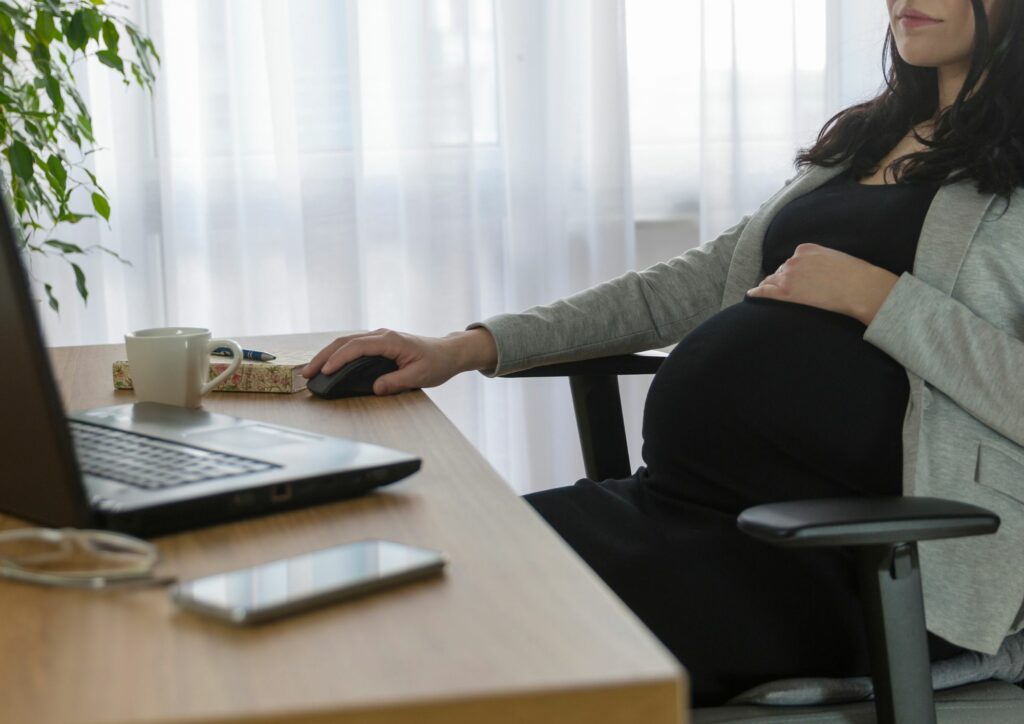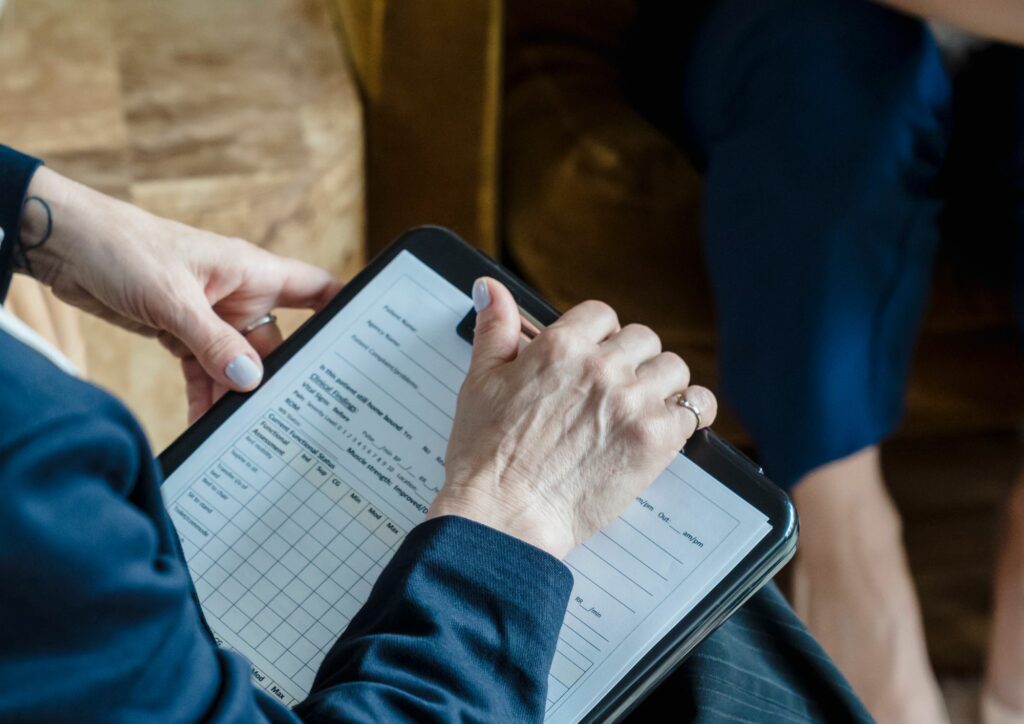Completing A Risk Assessment For Pregnant Workers

A general workplace risk assessment should include the risks to employees of childbearing age as standard. Further to this, a risk assessment for pregnant workers must be completed for each individual employee, taking into account their unique job role and circumstances. This guide will explain when the risk assessment for pregnant employees should be completed, risks and control measures to include, and how to develop a template to make the process more efficient for employees and businesses.
When To Complete A Risk Assessment For Pregnant Workers

The Health And Safety Executive (HSE) states that every employer should complete a risk assessment for pregnant workers as soon as possible after they have been informed, in writing, of the pregnancy. As pregnancy progresses, certain tasks may become more challenging, especially in certain job roles. Therefore, the risk assessment for pregnant employees should be periodically reviewed each trimester to ensure that any changes are accounted for.
A risk assessment should also be completed for anyone who has given birth in the last six months, or is currently breastfeeding, and includes temporary and agency staff, as well as permanent employees.
Employers cannot use a standardised risk assessment for pregnant employees. Every risk assessment must be unique to each pregnant employee to take into account any specific medical conditions and their individual job role and working environment.
Common Risks For Pregnant Workers
There are some common accidents at work that will be accounted for in your general workplace risk assessments. With a risk assessment for pregnant workers, risks associated with the pregnancy must be identified and control measures put in place to reduce these risks. There will be some risks that are unique to the individual, but in general, these are the most common risks to include in a risk assessment for pregnant employees:
Illness
Pregnant workers exposed to viruses or bacteria could pick up infections that pose a threat to their unborn baby. For example, the risk of this may be higher in the childcare or healthcare sectors.
Harmful Substances
Chemical hazards include things like cleaning fluids, pesticides, lead or mercury. Any pregnant workers coming into contact with any of these substances, or others, should be adequately protected or even alleviated of their duties. Chemical hazards should also be covered in a separate COSHH assessment.
Manual Labour
Industries such as construction or warehousing, where heavy lifting, manual handling or operating machinery are required, can be more hazardous for pregnant workers. A risk assessment for pregnant employees would need to list control measures specific to each type of manual task.

Work Space
Working in confined spaces or standing for prolonged periods of time can be harmful to pregnant workers, putting stress on their body and potentially causing postural problems. Retail professionals or office workers should be offered ergonomic solutions as part of a risk assessment for pregnant workers.
Working Conditions
Things like vibrations, loud noises and dust all contribute to a more harmful working environment for pregnant workers. Extreme temperatures can also be dangerous and customer facing roles can pose a threat of violence. Sectors where these risks are more prominent include factories, healthcare and warehouses and should have a thorough risk assessment for pregnant employees to manage these hazards.
Stress
Social, mental and emotional stressors can be heightened during pregnancy. Factors such as working alone, working long hours or working at night can increase risks associated with pregnancy. Those in the public sector, shift workers and those working from home are more susceptible to these risks.
Reducing Risks To Pregnant Workers

Once the risk assessment for pregnant workers has identified the hazards, control measures should be put in place to reduce them. Control measures might look like:
Organising Rest Periods
Pregnant workers are entitled to more rest and should be offered a safe space where they can take regular breaks. This also applies to breastfeeding mothers, who should have a private and hygienic place to express and store milk.
Adjusting Working Patterns
Night shifts could be moved to day shifts and hours reduced as options to reduce stress on pregnant workers. Those working alone might be offered more regular check-ins, or those travelling long distances could take on more remote working.
Changing The Environment
Where noise, vibration or small spaces are an issue, the work environment can be altered to make the working day safer and more comfortable. Introduce more spacious workstations, stools for those standing for long periods, or ergonomic chairs to correct posture.
Vary Duties
A risk assessment for pregnant workers might identify some hazards as being too dangerous or unavoidable. In this case, the employee might be allocated a new role or moved to a different area. Although a pregnant worker might start out being able to carry on their tasks as normal, as pregnancy progresses, they might find this isn’t the case. This is why a risk assessment for pregnant workers should be reviewed and updated periodically.
Wear PPE
Personal protective equipment is mandatory for many job roles, but takes on even greater significance for pregnant workers. Ensure PPE is in good condition and fit for purpose.
More Training
Not only could pregnant workers themselves be offered extra training for their job roles, but other employees could be given training on risk assessments for pregnant workers. This can ensure every risk assessment for pregnant employees is effective and robust, thereby protecting pregnant workers as thoroughly as possible.
Risk Assessment Template For Pregnant Workers

In the first instance, as we have covered, a risk assessment for pregnant workers should identify risks and then develop control measures to negate or reduce these risks. Although every risk assessment for pregnant employees should be very specific to their individual circumstances, having a risk assessment template for pregnant employees to hand will make the process smoother and more efficient. It will also ensure that all bases are covered, as you’ll have a standardised document every time that acts like a checklist so nothing is missed. Points to cover include:
- Personal details, such as the employee’s name, address, job role and department
- Details of the pregnancy, including the due date and then the actual birth date, which will be relevant for mothers returning to work within six months
- Names and dates of who is filling in the risk assessment and when
- Any medical issues, conditions or wellbeing concerns of the expectant mothers. This will help to identify unique risks that cannot be covered in a generic risk assessment
- A detailed list of the risks and hazards, including what they are and the potential consequences
- Generic control measures to be taken, such as allowing more breaks and advising on correct positioning to eliminate postural problems
- Individualised control measures like providing a foot stool, replacing PPE or providing a desk fan
- The perceived level of risk, whether it’s high, low or medium
- A checklist of action to be taken with dates it was completed or will be reviewed. If, for example, more equipment is needed, the date this was provided should be checked off
- Dates and signatures of everyone involved in completing the risk assessment
There is a detailed risk assessment template for pregnant workers available on the gov.uk website that can guide employers in creating their own template document.
Risk Assessment For Pregnant Workers From Rhino Safety
Protecting pregnant workers is a complex and important health and safety topic. Rhino Safety are experts in all aspects of health and safety and can bolster business’ efforts to protect pregnant workers.
We offer full health and safety audits, risk assessments and training. We can check your risk assessment for pregnant workers includes everything it should do, or create a risk assessment template for pregnant workers for you. We can also provide all other documentation relating to pregnant employees to ensure you comply with current legislation.
Please contact us for a quote or to talk through any aspect of health and safety and find out how we can help your business.
